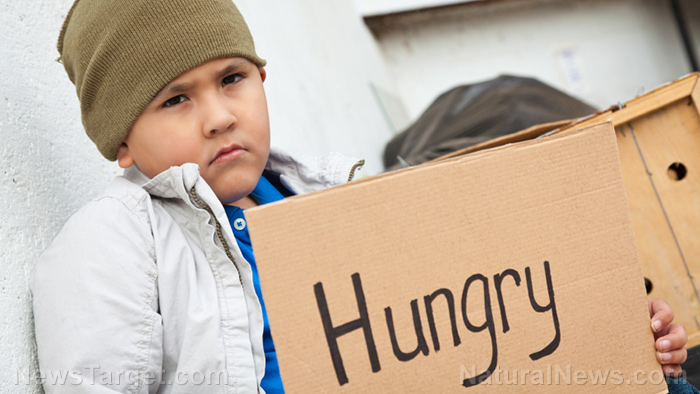
Researchers from The Ohio State University reached this unsettling finding after looking at more than 650 households in a racially and economically diverse city corridor of Columbus, Ohio. Their survey aimed to find out more about the participants’ access to food, and they were particularly interested in how much healthy food they could obtain. They chose households that could be considered representative in terms of household income, age, gender, and race.
More than a quarter – 26 percent – of the households they surveyed reported being “not at all satisfied” with their ease of access to food, while 27 percent of them said they struggled to find fresh vegetables and fruit.
Nearly a third of the households surveyed – 32 percent – had food security that could be considered either low or very low. This means they are skipping meals and going hungry, and therefore also missing school or work or dealing with health problems because of it. Such households often depend on sources of food like food banks.
Lead author Michelle Kaiser said the study shows just how much worse this problem is than many people believe. "Previous estimates based on county-level census data would have suggested about half as many households didn't have enough food or adequate access to food," she said.
Affordability and availability are big factors
While part of the problem is affordability, another factor is availability. The researchers looked at 90 different stores where the people in the study shopped. They discovered that many of them did shop at supermarkets occasionally. However, as supermarkets pull out of low-income areas and move away from setting up new stores in such neighborhoods, they are forced to shop more and more at other types of stores situated closer to their homes that are easier for them to reach by foot. These tend to be dollar stores, corner stores or drug stores with partial markets and carry-outs. Such stores only tend to offer a very limited amount of fresh produce.
Their findings were published in the Journal of Hunger & Environmental Nutrition. Past research has shown that people who suffer from food insecurity tend to have higher levels of social isolation, depression and social anxiety. There are some initiatives in place to encourage the owners of corner shops to offer more fruits, vegetables and other healthy foods, but a lot more needs to be done to help people get access to healthier foods.
Decentralized food solution
One potential solution is a decentralized food system using local gardens and small farms, which can be very beneficial in many ways. Under such systems, the middleman is essentially cut out, which makes produce far more affordable. It helps support community development by keeping money circulating within the same area, and it also minimizes the impact that problems like natural disasters can have on food security.
Modern innovations are making it easier than ever for nutritious food to be grown efficiently and affordably, using less water and electricity than ever before. It can even be done on a small scale. Many people with low food security to do not have acres of land at their disposal, but vertical gardens can be easily constructed using materials that are dirt cheap. Composting can be used to help replenish soil, and people could avoid pesticide exposure as well. Nutritious foods like spinach, broccoli, tomatoes, and carrots, are not particularly challenging for home gardeners.
If more people were aware of the possibilities and taught how easy it is to grow their own food – along with local codes that are friendlier to home gardeners – it could go a long way toward helping reduce food insecurity.
Find more headline stories on food collapse at FoodCollapse.com.
Sources include:
Please contact us for more information.






















